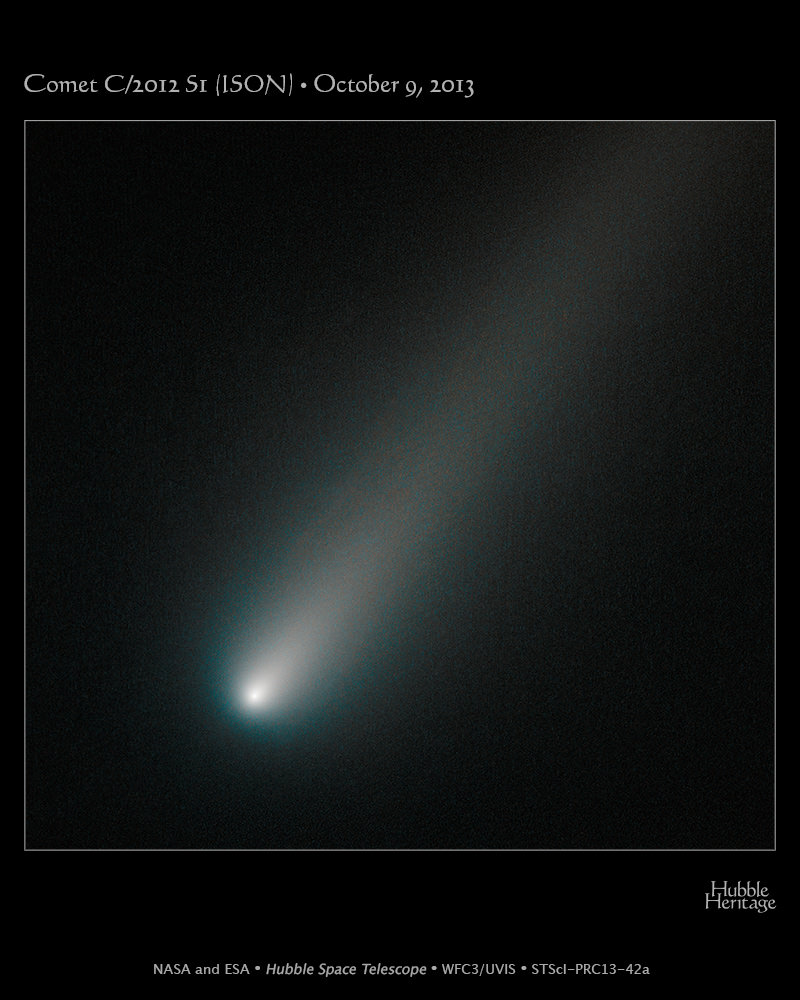We’ve been showing images of Comet ISON from amateur astronomers around the world, but now that NASA is back from the government shutdown, here’s more proof that the comet is still intact and has not disintegrated … despite some predictions to the contrary. This image was taken on October 9.
NASA explains:
In this NASA Hubble Space Telescope image taken on October 9, the comet’s solid nucleus is unresolved because it is so small. If the nucleus broke apart then Hubble would have likely seen evidence for multiple fragments.
Moreover, the coma or head surrounding the comet’s nucleus is symmetric and smooth. This would probably not be the case if clusters of smaller fragments were flying along. What’s more, a polar jet of dust first seen in Hubble images taken in April is no longer visible and may have turned off.
This color composite image was assembled using two filters. The comet’s coma appears cyan, a greenish-blue color due to gas, while the tail is reddish due to dust streaming off the nucleus. The tail forms as dust particles are pushed away from the nucleus by the pressure of sunlight. The comet was inside Mars’ orbit and 177 million miles (284 million km) from Earth when photographed.
So, its not disintegrating, its not a three-piece body, its not a UFO… instead Comet ISON is turning out to be a rather average, ordinary comet. How has this comet sparked predictions that have gone from “bright as the full moon” to “disintegrating as we speak,” asked Josh Sokol from the Hubble ISON blog? “Simply put, ISON peaked early. When it was first discovered, way out past Jupiter, ISON was really bright,” Sokol wrote. “Extrapolated, those first data points made ISON look like it would shine even more as it got closer — and when it didn’t, the coverage seesawed back toward calling ISON a total bust.”
But ISON is still en route to the Sun. It will pass closest to the Sun on November 28, and if it remains intact after that close pass, it will make its closest approach to Earth on December 26, at a distance of 39.9 million miles (64 million km).
NASA is having a live Hangout with Hubble comet scientists to discuss the new image and latest research findings about ISON today (Oct. 17) at 4 p.m. EDT (20:00 UTC).
Update: here’s the replay:
Also, check out the Comet ISON Toolkit from NASA
Sources: HubbleSite, Hubble ISON blog

